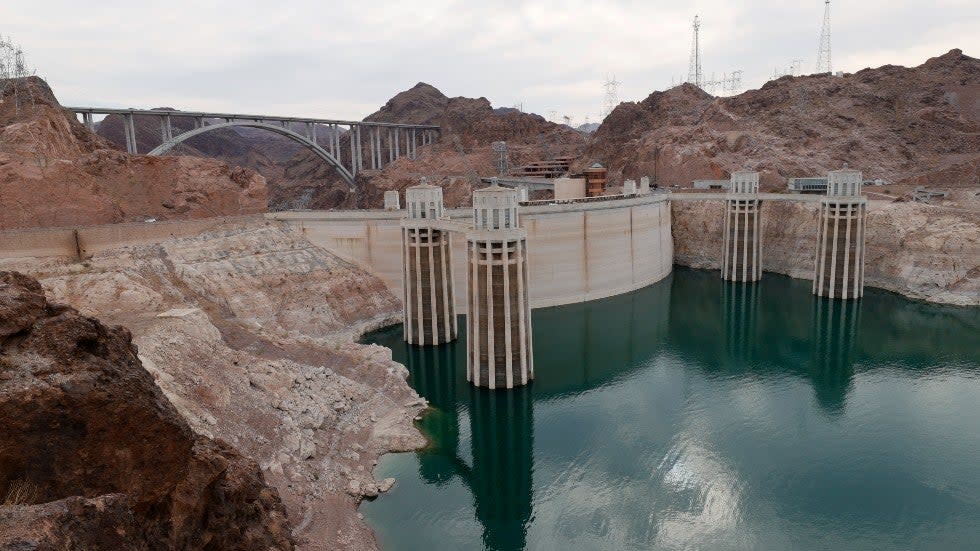State, federal agencies announce $200M investment in Lake Mead

State water agencies in Arizona, California and Nevada announced a $200 million investment in Colorado River conservation projects on Wednesday, in a last-ditch effort to keep the basin's biggest reservoir from dwindling to dangerously low levels.
The cross-border collaboration, which also includes the Department of the Interior, will aim to add 500,000 acre-feet of additional water to Lake Mead - the Colorado River's largest reservoir - in 2022 and 2023, by facilitating initiatives that promote water conservation in the Lower Colorado River Basin, according to the partners.
That additional water, which is enough to provide for 1.5 million households each year, would boost the reservoir's level by 16 feet, a news release from the agencies said.
"Two decades of drought on the Colorado River is taking a toll across the Basin and on Lake Mead," U.S. Bureau of Reclamation Commissioner Camille Calimlim Touton said in a statement. "By working together we've staved off these historic low levels for years, thanks to collaboration and conservation in the Lower Basin. But we need even more action, and we need it now."
The partners - the Bureau of Reclamation, the Arizona Department of Water Resources, Central Arizona Project (CAP), the Metropolitan Water District of Southern California, and the Southern Nevada Water Authority - signed a memorandum of understanding during the Colorado River Water Users Association's annual conference in Las Vegas.
According to the agreement, called "the 500+ Plan," the Arizona Department of Water Resources will commit up to $40 million to the initiative over two years, with CAP, Metropolitan and Southern Nevada Water Authority each contributing up to $20 million. The federal government has pledged to match these commitments, for a total funding pool of $200 million, the news release said.
Some agricultural and urban conservation efforts detailed in the deal include financing crop fallowing to save water, as well as city conservation programs to reduce diversions from Lake Mead.
The 500+ Plan also underscores a key element of the bipartisan infrastructure bill, which President Biden signed into law last month. The bill, the partners noted, includes an $8.3 billion investment in water infrastructure, which aims to minimize the impacts of drought and create a long-term plan for conservation and economic growth.
Arizona, California and Nevada - the three Lower Basin states - had already come together in 2019 to sign the Lower Basin Drought Contingency Plan (DCP), agreeing to contribute water to Lake Mead if it declined to certain levels, the partners noted.
"We had hoped the contributions made under the DCP would be enough to stabilize Lake Mead while we seek longer-term solutions to the challenges on the Colorado River," Metropolitan General Manager Adel Hagekhalil. "But they aren't, which is why we are moving forward with the 500+ Plan."
While negotiations on the 2019 DCP took more than five years to complete, the 500+ partnership "came together in a matter of a few months," according to Arizona Department of Water Resources Director Tom Buschatzke.
"That alone is a powerful testament to the commitment of the Lower Basin States to work together with our partners at Reclamation to protect this vital river system," Buschatzke said.
And while the past few months "presented tremendous challenges with the additional pressure of the need to work quickly," CAP General Manager Ted Cooke added that "this difficult situation further strengthened our relationships."

